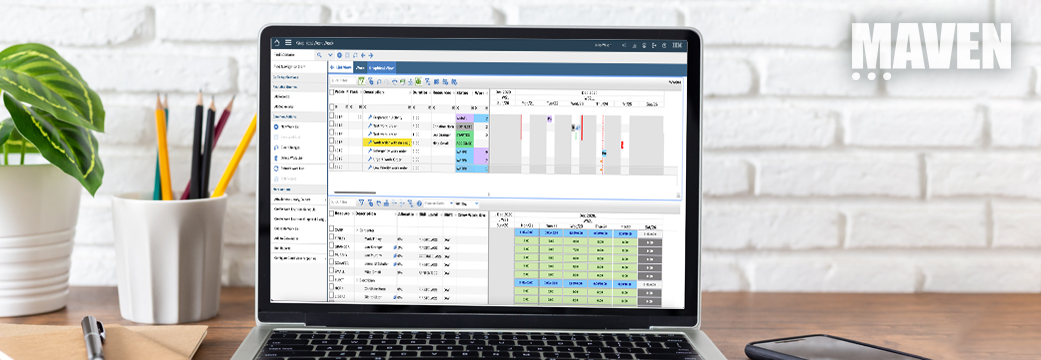Show me where the highest maintenance labor costs are coming from in our organization.
My head starts to spin as I work through this SQL syntax – which will inevitably vary significantly depending on the database type, whether this will be a one-time or recurring request, and my correct positioning of commas, brackets, and apostrophes.
But no worries! IBM has recently announced exciting extensions of the Maximo Application Suite (MAS) to include Cognos Analytics in 2023!* Cognos Analytics provides extensive insights of data with analytics, explorations, and natural language details – without the need for SQL queries!

The announcement builds on Maximo’s decades-rich legacy of providing an integration to Cognos Analytics starting with the Maximo 7.1 releases. However, with the technology platform change to IBM Open Shift with MAS, the enablement of Cognos Analytics has not been made available until now – with the upcoming MAS 8.10 release in March 2023.
With the MAS 8.10 release, there are numerous new and existing features and requirements. Here are Maven’s Top 10 Maximo Cognos Integration details for MAS 8.10 that you need to know:
1. Version Information: Beginning with Maximo Application Suite 8.10 (expected release date March 2023), an integration to Cognos Analytics 11.2 Cartridge for IBM Cloud Pak for Data 4.6.0 (Cognos Analytics CP4D) will be available.
2. New Cognos Features: The Cognos 11.2 release stream is packed full of new features including new forecasting functionality, improved visualizations, relationship explorations, analytics, and more! This can significantly simplify your exploration of Maximo data as Cognos performs the work for you without any requirements to create complex SQL where clauses!
Using a simple data export of work orders from Maximo and then following the simple steps in Cognos to Upload, Prepare, and Explore data. Within minutes, Cognos generated a heat map showing maintenance labor costs by Site, and provided Analytic insights that the costs were driven by Site Detroit with EM (Emergency Work Orders) as shown below.

3. Deployment Availability: Cognos Analytics is available only to on-premise MAS environments. It is not available to SaaS/Dedicated Cloud instances. This is similar to deployment restrictions with Cognos in Maximo 7.6 environments.
4. Application Points: Install Application points will not be required for Cognos. This is significant as it reduces a potential barrier to Cognos usage within MAS.
5. Integration Architecture: Cognos Analytics will be deployed within Open Shift as shown in the top-level architecture diagram shown Cognos is not deployed within the MAS environment.

6. Integration Installation: The installation of the integration is manual. There is no automated installer. IBM will provide integration installation details with the release of MAS 8.10. It is expected the user performing the installation must be familiar with Open Shift, Maximo Manage and Cognos Analytics.
7. Security Authentication: Because the integration is using Cognos Analytics CP4D (Cloud Pack for Data) installed within Open Shift, the integration requires IDP – either LDAP, SMAL or OIDC (OpenID Connect) to authenticate the Maximo user in Cognos Analytics CP4.
IBM provides a Maximo Cron Task to synchronize new Maximo Cognos users to Cognos. The Cognos Administrator specifies what Cognos feature access the Maximo user then has (e.g., Analytics Viewer versus Analytics Explorer).
8. Integration Features: The Maximo Manage – Cognos Analytics Integration includes:
- Cron Task: To synchronize new Maximo Manage users to Cognos
- Launch Points: Configurable access actions within Maximo applications to launch user to Cognos
- Access to Cognos Analytics products including Dashboards and Stories, Reports, Framework Manager, and Web Modeler.
9. Features not included with initial release: IBM has noted that Maximo delivered reports, and the ability to publish Report Object Structures as Cognos Packages will not be included in the initial Clients can use Framework Manager, Web-based Models, or Maximo Excel data exports for data analysis.
10. Maximo 7.6.1 Cognos Upgrade: For clients using the Maximo 7.6.1 Cognos 11.x Integration, your content can be exported from your current Cognos 11.x environment to the new Cognos 11.2 environment. This content includes your data sources, data packages and report. The time to perform the export/import will vary depending on the size of your content and your Cognos expertise.
Interested in learning more about Cognos Analytics?

Join the new ADMUG (Analytics and Data Maximo User Group) as we learn and share best practices on Maximo data, reporting, and analytics! ADMUG is open to all Maximo users – regardless of location, role, or experience.
Or reach out to Maven at MAS@mavenasset.com to schedule time to discuss or see a demonstration of Maximo, MAS, Cognos, and more!
Note:
This blog content is created on forward-looking content from IBM. Until the referenced version of IBM MAS 8.10 is released, this content may change.







